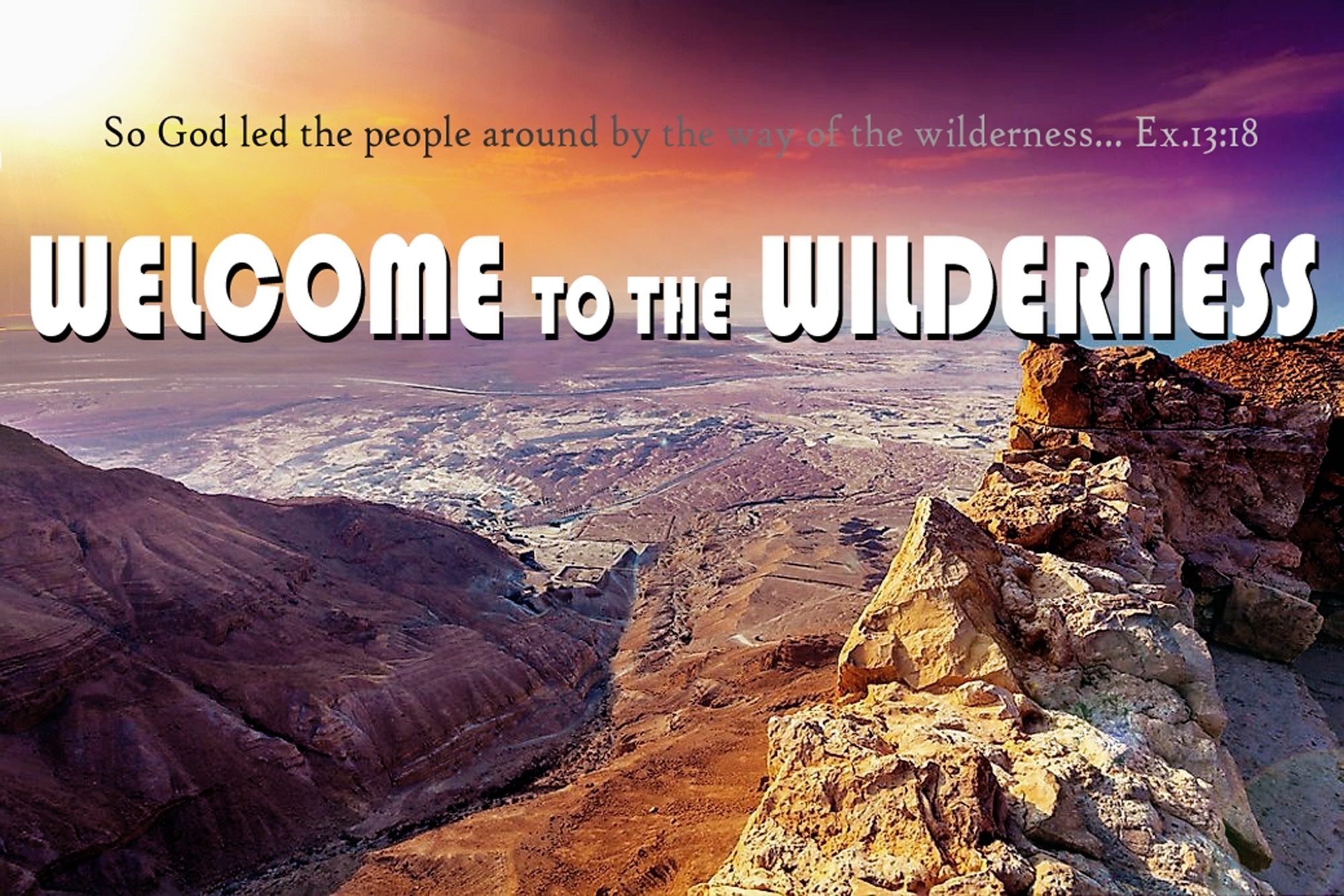
Are We Pushing the Wilderness Envelope?
Jeremiah 2:2 This is what the Lord says; ‘I remember the devotion of your youth, how as a bride you loved me and followed me through the wilderness….’
As aeronautical advancement proceeded through the 60’s and 70’s, engineers became aware of a pressure wave that formed a conical-shaped void as their aircraft sliced through the sky, similar to how a boat leaves a wake in the water behind it. Scientists called this wake in the sky, an ‘air-envelope’, and they began to notice that the shape of this air-envelope tapered, the faster the aircraft flew. As planes continued to be designed and built for greater speed, the air-envelope kept being ‘pushed’ into a more tapered shape. The phrase, ‘pushing the envelope’, thus became associated with the often risky and even perilous maneuvers performed by the pilots as they flew at increasingly dangerous speeds.
The Old Testament can provide us with incredibly colorful stories that make for fascinating Sunday school lessons, and if you’re of a certain... umm... vintage, you'll likely remember trying to behave so that Mrs. Matthews might just let you put a flannelgraph figure on the board (encouraging good behavior by allowing kids to turn on/off the YouTube video doesn’t quite seem to be as effective). Vintage aside, if you’re anything like me, you love those OT accounts, but you can sometimes find it difficult to see how the story connects to your life today, and you can struggle to find an accurate or appropriate application. The temptation may be for us to ‘push the envelope’ with elements presented in an Old Testament narrative, and hastily force them into an inappropriate, confusing or even dangerous application.
As we look at exploring our Christian life and faith from the perspective of a ‘wilderness experience’, it may be helpful to provide an explanation for why the wilderness is a useful and accurate context for better understanding and appreciating the life of believers today.
Q: Hey Josh, we certainly aren’t encountering any of the physical experiences of wilderness life, and spiritually, Christians are now living under new covenant realities that replaced the old covenant experiences of Israel’s time in the wilderness, so aren’t we ‘pushing the envelope’ with the 'wilderness' application?
A: Well… I don't think so. We recognize that God’s people today aren't shaking the sand from their tunics; we’re not literally experiencing the actual situations and events that Israel lived through. Those particular wilderness circumstances and occurrences are categorically unique to Israel’s 40 years between Egypt and the Promised Land, so in that regard, we are not stating that the literal context of Israel’s wilderness life is applicable to us now.
Q: Ok… but, if the actual circumstances and events of Israel’s wilderness experience are unique, then can there really be any meaningful connection or application for believers today?
A: While we acknowledge that the specific circumstances and occurrences Israel experienced in the wilderness are unique, there are elements of Israel’s wilderness experience that do continue to be a reality in the life of the church today.
Paul tells us in 2Timothy 3:16 that ALL Scripture is God-breathed and is useful for teaching, rebuking, correcting and training in righteousness. It is relevant to note that Paul would have only had the Old Testament writings in front of him while he wrote this to Timothy, because the New Testament section of Scripture would have been in the process of being authored. While Paul’s 2nd letter to Timothy is part of the New Testament, and it’s addressed to an audience under God’s new covenant relationship, in Paul’s mind, the Old Testament writings (including the account of God’s people in the wilderness), are practically useful and entirely applicable to believers today.
Q: Alright... but then, how do we know what aspects of Israel’s life in the wilderness, or other Old Testament experiences for that matter, hold practical application for believers today?
A: Well, one of the most important places to start, is by recognizing that God was using the specific experiences, conditions or circumstances in the Old Testament as ‘forms’ for how Israel was to relate to God, to one another and to the world around them. A lot of these specific ‘forms’ are bound strictly to Israel’s time and life under the old covenant, however behind these unique and sometimes even peculiar ‘forms’, there is a timeless function or principle that still applies to us today.
Some of the clearest examples of these unique ‘forms’ with timeless principles behind them, can be seen in Deut. 22. In v.8, God’s people are commanded to build special barriers around the roof-top, living area of their houses, and likewise, in v.9, God’s people are commanded not to mix or hybridize crops. The roof-top barrier was a specific ‘form’ of preventing injury to others, but behind that ‘form’, was the principle of expressing care and concern for others, which helped regulate how God’s people were to relate to one another. Similarly, the crossbreeding or mixing of crops is a unique ‘form’ under the old covenant that was meant to convey God’s holiness and be a reminder of the important principle of not mixing with the sinfulness of the world around them. Believers today aren’t obligated to observe ancient building codes or farming practices, but behind these ‘forms’ are timeless principles that transcend the old covenant and continue to be applicable to God’s people today. Along these lines, the wilderness setting can be seen as a specific ‘form’ in the life and redemption of Israel, but behind this actual, physical ‘form’, there are enduring truths and principles that apply to believers today; principles that continue to inform us of our relationship with God, our relationship with each other, and our relationship with the world.
Q: Ok, that seems to make sense, but how do we know what timeless, transcendent functions or principles are behind specific old covenant ‘forms’ like Israel’s wilderness experience?
A: That’s a great question, and the answer ultimately comes down to… studying. One of the best ways to ensure that we correctly identify, understand and apply the transcendent principles behind Old Testament ‘forms’, is by studying what the rest of Scripture teaches us about that ‘form’, or about the principles and truths we believe are behind them. By considering and comparing the different passages in which the wilderness 'form' appears, and by examining the specific contexts or implications, we can ensure that we are not 'pushing the wilderness envelope', and we can begin to develop an accurate idea of the important principles and truths that remain applicable for us today. Our hope is to take a look at the wilderness ‘form’ that prolifically appears in Scripture through direct citations and re-tellings, as well as in more subtle ways like allusions and echoes; and use this to help build a fuller understanding of the timeless, transcendent wilderness principles that are meant to encourage and equip God’s people today.
